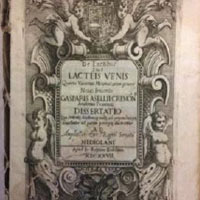The pioneers of modern lymphology in the early 20th century

HTML: 45
All claims expressed in this article are solely those of the authors and do not necessarily represent those of their affiliated organizations, or those of the publisher, the editors and the reviewers. Any product that may be evaluated in this article or claim that may be made by its manufacturer is not guaranteed or endorsed by the publisher.
Authors
We can state that modern lymphology was born from the pioneering work of the physicians of the first quarter of the 20th century. The turning point was definitely linked to the huge and precise work of the anatomists of the previous centuries and above all to the fine anatomical studies that resulted from the works of the second half of the 19th century. In the following decades, the possibility of specifically highlighting and studying lymphatic vessels and their physiology allowed the foundational step towards their clinical application and therefore the real understanding of pathologies and the first rudimentary therapeutic approaches. After the work of Von Recklingausen (1863) and Sappey (1876), after the technical completion of the then modern Gerota staining (1896) and the postulates on the physiology of the microcirculation put forward by Starling (1894), three centuries after the intuitions of Aselli (1626), we saw the definitive emancipation of Lymphology as an independent medical subject.
How to Cite
PAGEPress has chosen to apply the Creative Commons Attribution NonCommercial 4.0 International License (CC BY-NC 4.0) to all manuscripts to be published.

 https://doi.org/10.4081/vl.2021.9631
https://doi.org/10.4081/vl.2021.9631





